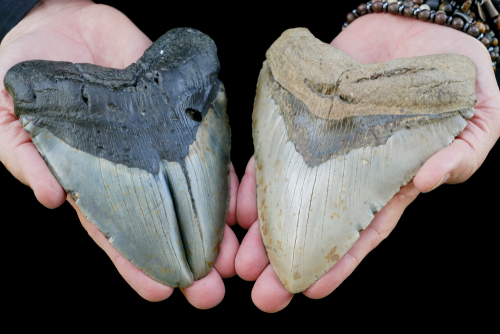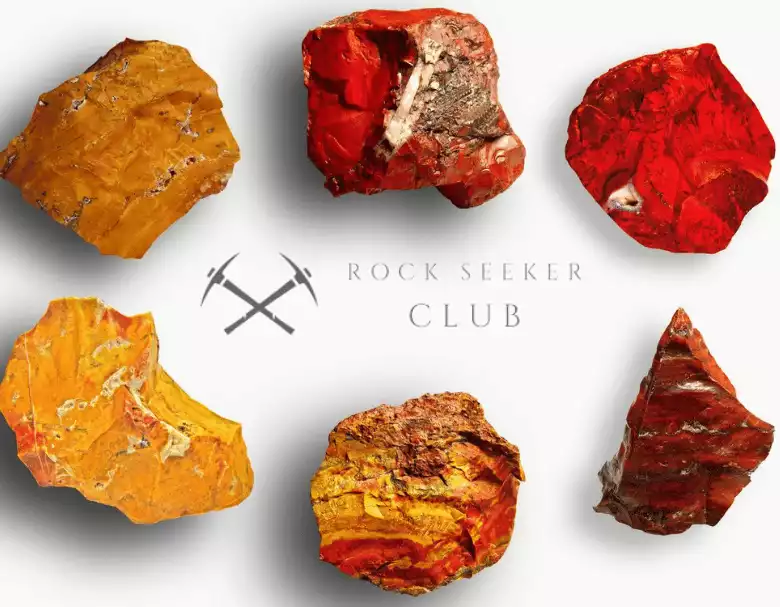Are you a shark fan? Got a collection of shark movies, and maybe a shark tooth or two? Perhaps a whole set. With or without one, the real jewel to the crown would be a Megalodon tooth! If you’ve ever seen the movie The Meg, you’d know what we mean.
The Megalodon is the largest shark—fish, even—on the face of the Earth, each tooth is about the size of a hand palm!
If you’re a South Carolina resident, you’re in luck because SC happens to be one of the main regions housing Meg teeth fossils. Stick around because we’re gonna show you just where to look!

Where to Find Megalodon Teeth in South Carolina
Because the coastal area in South Carolina was previously a seafloor, it’s home to many shark fossils, including Megalodon teeth.
We’ve looked at several sources, and most stories seem to stem from several locations. Here’s the rundown:
Morgan River, Beaufort
Beaufort is a small harbor town located in the Lowcountry region of South Carolina. It’s a lovely scenic location.
The Morgan River stream is located about 11.6 miles from Beaufort County. Along its coast, you may very well find Meg’s tooth. One of the largest Meg teeth was found there; it was 6.70 inches long!
If you live in Beaufort or plan on taking the trip, consider rubber boots, as the riverbank is known to be quite muddy.
Cooper River
Cooper River extends throughout the cities of Charleston, North Charleston, Mt. Pleasant, Moncks Corner, Goose Creek, and Hanahan. Searching its bank in any of these cities provides a good chance at finding Meg’s tooth!
It’s a tidal river, which means tides influence its flow and height levels. At a high tide, you wouldn’t be able to see much along the bank, so be sure the tide is low.
Jessica Owens was once exploring the river’s muddy bank in Charleston and happened to come across a shark tooth that she recognized to be far larger than usual. She soon discovered it belonged to a Megalodon. It was 5.75 inches in size, bigger than her hand!
Blackwater Rivers
Black rivers are almost dark in color due to the tannic acid that seeps from tree leaves into the water and makes up most of its bed. Black rivers are usually found in swamp-like regions.
There are several Blackwater rivers in South Carolina, including Combahee, Ashepoo, and Edisto. Even the Cooper River is connected to a source of blackwater.
In fact, it’s advised to follow diving instructors into the depth of the river. As it’s not exactly a sought-after activity—because of the dark and foggy nature of the water—you’re likely to find more than just Meg teeth! Although, some captains may require a diver certification to allow you to board for such expeditions.
Chandler Bridge Formation, Summerville
Summerville is a moderate-sized town in South Carolina, and it extends northeast into Berkeley and Charleston counties.
The Chandler Bridge Formation is a geologic formation that preserves fossils dating back as late as the Oligocene period, a great place for shark-fossil hunting.
Some of these fossils have made their way to the Chandler Bridge Creek, which is a stream in Berkeley, Charleston, and Dorchester counties that flows into the Ashley River. You’ll be ankle-deep in water, so consider that for your trip.
Read More:
Not up for Searching?
It’s perfectly fine if you’re not up for the tooth-hunt of an extinct shark; the chances of finding one may sound slim. Some great quality Meg teeth are sold online and held in auctions.
Megalodons and How Important Their Teeth are
First off, you should know that this great, predatory beast went extinct about 2.6 million years ago. Unfortunately, the only place you can see one would be on the other end of a tv screen.
What Was Left of Them?
Their teeth, and possibly a handful of preserved vertebrae, are the only evidence such creatures ever actually existed. Because most shark species are majorly composed of cartilage, their bodies break down and don’t fossilize. However, their teeth are made from dentin, a substance that’s harder than bones.
As you can tell, since they don’t break down, Meg’s teeth are numerous all across the world, more condensed in certain regions. With some research, preparation, and a little luck, you might come by one!
So, what exactly is a Megalodon? Only the largest shark to ever exist! 2.6 million years was a long time ago, and if there weren’t any skeletons left behind, how could scientists tell it was a shark? Simple. The teeth. See how unique they are? Let’s take a closer look.
Megalodon Teeth
Megalodon teeth are similar to white shark teeth. This is how Megs were identified as a species of sharks. The teeth are serrated, symmetrical, and triangular in shape.
An average white shark’s tooth is around 2 inches long, while a Meg’s is up to 6. That’s quite a leap. Besides, Meg’s teeth are much thicker and can make one nasty bite!
Megalodons have 276 teeth, while white sharks only have 50! They also have a jaw diameter of up to 7 feet.
Using the size of their teeth and their identification as sharks’ species, scientists could estimate the size of an average adult Meg to be about 60 feet large!
With just teeth, you can tell what a creature is and how large they are. How amazing is that?!
Wrapping Up
Even though it sounds unlikely that you’d stumble across one of these treasures, it’s still very possible if you search long enough. The quest to search for a giant shark fossil is too cool to dismiss! And if you succeed, it’ll be a tale you’ll forever be proud of.
Besides, the tooth looks awesome! Hand-sized, heavier than a bone, serrated, sharp, and just beastly! Definitely something worth the effort.
Now that you know where to look, chances are you’ll more than likely find one. So, get out there and get hunting! Good luck!
- 7 Of The Largest Gold Nuggets Ever Found…Ever! - December 21, 2023
- Find Gold On Your Property? Here’s Why You Should Think Twice Before Spreading the News - December 21, 2023
- The Opalized Crab Claw (And How It Formed) - September 14, 2023
- Online rock and mineral club for collectors of all levels!
- Find community with like-minded rock and mineral enthusiasts.
- Monthly Giveaways!
- Free Access to Entire Digital Library of Products (annual memberships)


